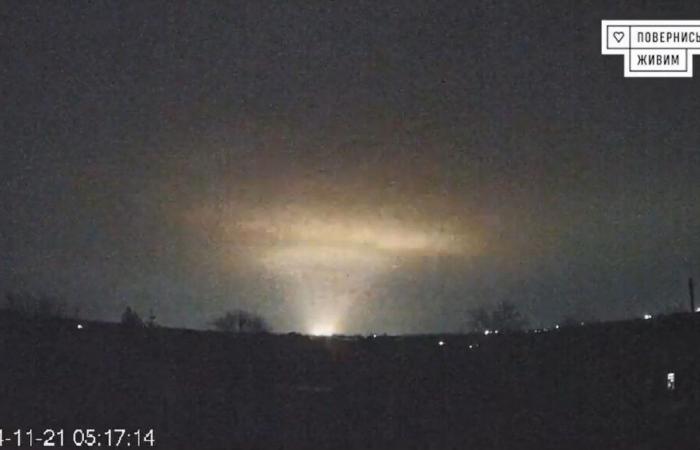This firing, closely scrutinized, raises concerns: on the one hand, because this missile can be equipped with nuclear warheads, and on the other hand, because it marks the appearance of a new weapon of the Russian arsenal, which Moscow claims is capable of changing the course of the war… But should we believe the Russian general staff? What does the use of this missile reveal about Vladimir Putin's nuclear rhetoric? What do these strikes tell us about the strategic evolution of the conflict?
The “Orechnik” missile: a formerly banned intermediate-range weapon
The “Orechnik” missile is a new intermediate-range ballistic weapon developed by Russia. It has an estimated range of between 2,000 and 3,000 kilometers and represents an evolution of the RS-26 missile, a program interrupted due to its cost. This new weapon revives a type of missile previously banned by the Intermediate Nuclear Forces (INF) Treaty signed in 1987 between the USSR and the United States, which banned intermediate-range missiles. The withdrawal of the United States from the treaty in 2019, followed by Russia, allowed the relaunch of these programs, explains Héloïse Fayet.
International issues Listen later
Lecture listen 11 min
Do not break “the nuclear weapon taboo”
Unlike Russian intercontinental missiles, used with a nuclear warhead, the “Orechnik” missile can carry a conventional warhead. “Russia's objective is to use several of these missiles simultaneously to reach sites which, in the past, were only possible with nuclear weapons and therefore to strike European sites in Ukraine, Poland, in Romania, in the Baltic countries, without crossing the nuclear taboo”specifies Héloïse Fayet.
France Culture goes further on Saturday Listen later
Lecture listen 39 min
A political message addressed to Western countries
The use of such a missile is largely motivated by political objectives. The strike had little military impact in the eyes of Héloïse Fayet, but “it sends a political message to Western countries to reduce their support for Ukraine”. Russian President Vladimir Putin is also seeking to remind through this maneuver that he has alternatives to the nuclear threat. “He knows that nuclear weapons have not been used since 1945 and that today, Russia is not in a weak position on Ukrainian territory. Then he sees clearly that the imminent arrival of Donald Trump will a priori lead to less support for Ukraine. It also has no real interest in putting itself on the edge of the international community, even more than it already is, in contradicting its Chinese partner who, for its part, is always very cautious in relation to the use of nuclear weapons”enlightens Héloïse Fayet.
France






